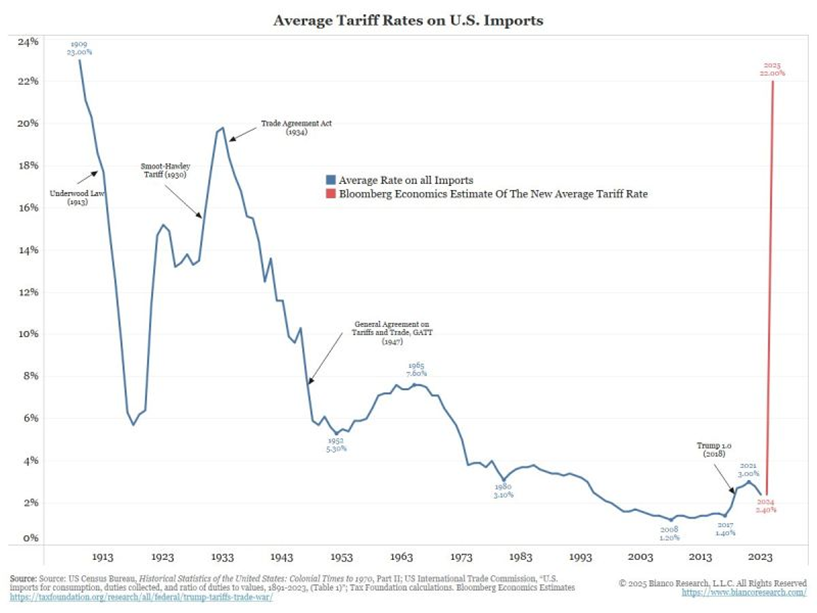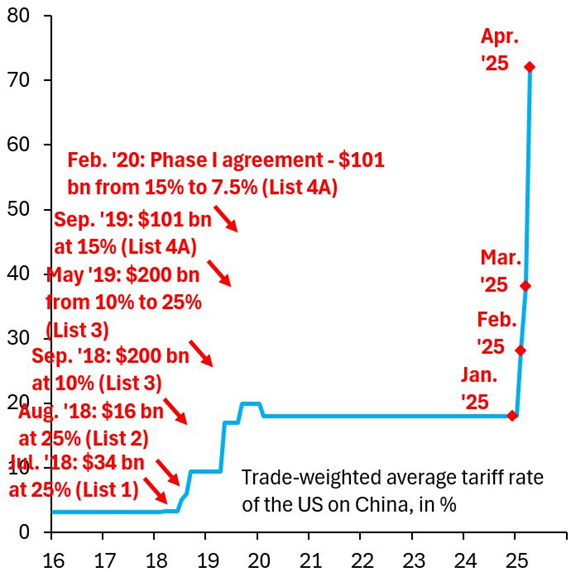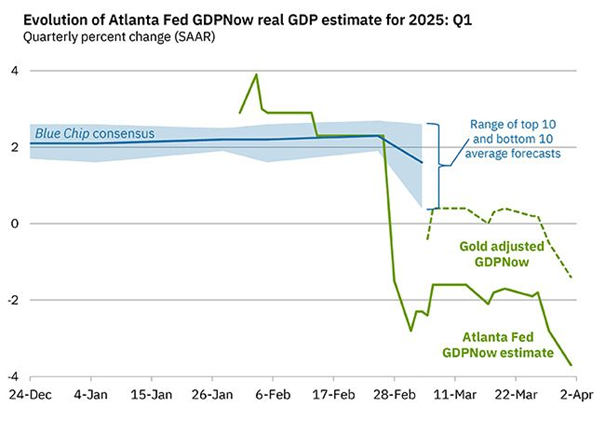President Trump declared a national emergency over trade deficits and imposed a 10% general tariff on all countries, effective 5 April, along with higher tariffs on nations with the largest US trade deficits, starting 9 April. These actions signal a shift from speculation to a worst-case scenario for the global economy, as the measures appear to be long-term policy rather than short-term negotiation tactics.
The administration's goal is to sharply reduce the US trade deficit, which it views as an economic injustice. However, targeting countries based purely on trade imbalances appears ideologically driven, lacking a nuanced view of unfair trade practices.
This approach increases the risk of retaliatory measures, particularly from Europe and China, who have already signalled readiness to respond. Trump's threats of further tariffs if other nations retaliate raise the likelihood of a rapid escalation in trade tensions.
The lack of clear criteria for lifting these tariffs adds to the uncertainty, making it difficult for affected countries to negotiate effectively. As it stands, this announcement marks a major disruption with potentially severe consequences for global trade and financial markets.

Average Tariffs Go Up to 22%
Bloomberg Economics estimates that the average US tariff on roughly $3 trillion worth of imported goods is set to rise to 22%, the highest level in a century. However, this figure is far from final.
Several scenarios could unfold: China may seek to negotiate a deal or counter the impact with additional stimulus and a weaker yuan. The EU might retaliate, prompting a US escalation— and the global response remains highly uncertain. A spike in the Economic Uncertainty Index and heightened market volatility are likely on the horizon.

Source: Bianco Research
If the new 34% tariff is added on top of existing measures, China’s average tariff rate will jump by 54 percentage points this year alone, exceeding the increases seen during President Trump’s first term.
The question now: How will China respond? A devaluation of the Chinese yuan could trigger a broad risk-off sentiment across global markets.

Source: Robin Brooks
AtlantaFed Model Signals a Contraction in Q1 US Real GDP Growth
The Atlanta FedGDPNow is a real-time economic model created by the Federal Reserve Bank of Atlanta that provides a "nowcast" (a real-time estimate) of US gross domestic product (GDP) growth for the current quarter.

Source: AtlantaFed Nowcast
As of 1 April, the Atlanta Fed’s GDPNow model estimates Q1 2025 real GDP growth at -3.7%. After adjusting for imports, the projected contraction stands at -1.4%. Just two months ago, the same model was projecting +3.8% growth for the quarter, a dramatic reversal in expectations.
